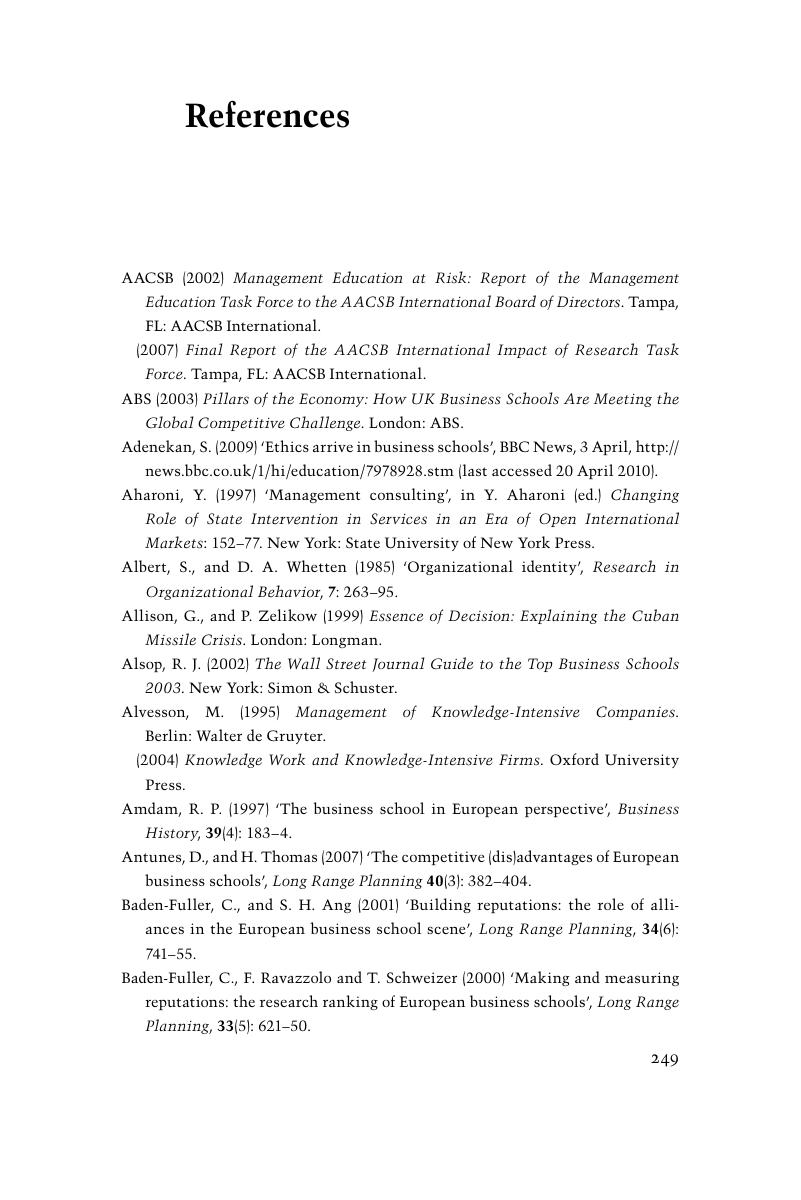Book contents
- Frontmatter
- Contents
- List of figures
- List of tables
- Preface
- Acknowledgements
- Introduction
- 1 The business school landscape: trends and dilemmas
- 2 Business schools as professional organisations (professional service firms)
- 3 The leadership process in business schools
- 4 Strategic leadership in practice: leading the strategic process in three top business schools
- 5 Strategic leadership in practice: the role of the dean
- 6 Learning from the trenches: personal reflections on deanship
- References
- Index
- References
References
Published online by Cambridge University Press: 28 April 2011
- Frontmatter
- Contents
- List of figures
- List of tables
- Preface
- Acknowledgements
- Introduction
- 1 The business school landscape: trends and dilemmas
- 2 Business schools as professional organisations (professional service firms)
- 3 The leadership process in business schools
- 4 Strategic leadership in practice: leading the strategic process in three top business schools
- 5 Strategic leadership in practice: the role of the dean
- 6 Learning from the trenches: personal reflections on deanship
- References
- Index
- References
Summary

- Type
- Chapter
- Information
- Strategic Leadership in the Business SchoolKeeping One Step Ahead, pp. 249 - 260Publisher: Cambridge University PressPrint publication year: 2011



